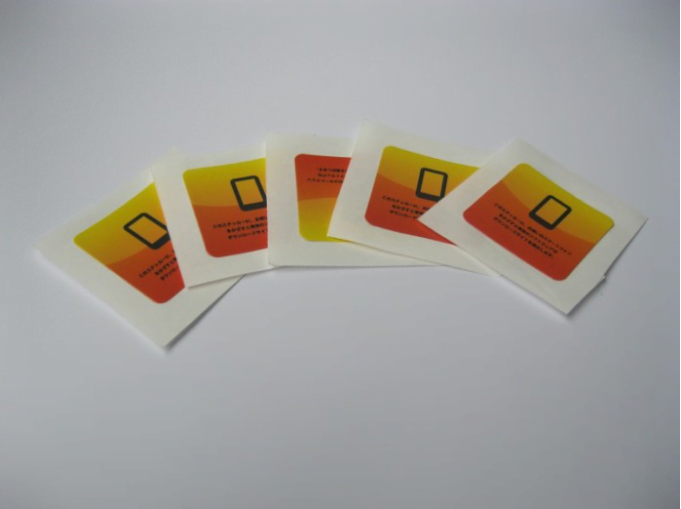Recently, a large number of chips are out of stock in the chip market. The mainstream Alien and NXP RFID chips have many models out of stock; therefore, people began to look for some new alternative chips; ST LRI chips with their excellent performance, abundant supply and high Cost-effective, won the favor of the market
1. Introduction to RFID tags
Tag: It is composed of coupling elements and chips. Each RFID tag has an electronic code that is attached to the object to identify the target object, commonly known as electronic tag or smart tag
RFID electronic tags: active tags, passive tags, semi-active and semi-passive tags
RFID working principle: After the tag enters the magnetic field, it receives the radio frequency signal from the reader, and uses the energy obtained by the induced current to send the product information stored in the chip (Passive Tag, passive tag or passive tag), or actively send a certain Frequency signal (Active Tag, active tag or active tag); after the reader reads and decodes the information, it is sent to the information system for relevant data processing
Two, ST chip introduction
Commonly used RFID high-frequency chips are NXP , ST Microelectronics, Infineon. Now we focus on our protagonist-ST chip, the name STMicroelectronics, STMicroelectronics (ST) was established in 1987, is a new company after the merger of Italian SGS Microelectronics and French Thomson (Thomson) Semiconductor. In May 1998, SGS-THOMSON Microelectronics changed its company name to ST Microelectronics.
The company has been publicly listed since 1994, and STMicroelectronics is listed on the New York Stock Exchange (trading code: STM), the Pan-European Paris Stock Exchange and the Milan Stock Exchange. Since its inception, STMicroelectronics’ growth rate has exceeded the overall growth rate of the semiconductor industry. Since 2005, STMicroelectronics has always been one of the world’s advanced semiconductor companies.
The annual revenue of 2006 was 9.85 billion U.S. dollars, and the company’s revenue in the first half of 2007 was 4.69 billion U.S. dollars. STMicroelectronics has launched two new 2048-bit ‘long-distance’ RFID asset tracking memory products. The new products comply with ISO/IEC 15693 and ISO/IEC 18000-3 Mode 1 RFID standards. Cost-sensitive multi-function RFID electronic tags require data storage and secure storage. LRI2K uses 2048-bit memory because of the market’s demand for increasing the storage density of electronic tags. The new IC is particularly suitable for markets such as access control, library automation and supply chain management, as well as anti-counterfeiting applications for sensitive products such as medicines and valuables.
Three, ST LRI2K characteristics
LRIS2K also provides an innovative password function, which brings more protection to users. With three valid commands, each storage in the chip can be individually profiled. The security profile function brings a high degree of flexibility and allows different links in the supply chain to control different storage.
LRI2K provides 2 Kbits of electrically erasable user memory (EEPROM) and an optional standard HF (high frequency) 13.56MHz on-chip radio frequency interface. High-speed data transmission rate, up to 1.5m application read-write distance, and 13.56MHz RFID technology advantages, such as high reliability and low RFID reader cost, these features and functions make these two chips particularly suitable for security and inventory speed And label size are related to the application of the item label.
In addition, because of the high on-chip trimming capacitance, LRI2K also allows the antenna to be designed to be small in order to save space and is suitable for labeling applications for small-sized items, such as medicine bottles in the pharmaceutical industry. It provides lockable 2048 EEPROM user bits (32 bits per block), a 64-bit identification code (UID) and related ISO-compatible anti-collision mechanism, and internal trimming capacitor and KILL (delete) function.
The memory is divided into 64 32-bit storages. With a lock command, each can be independently write-protected to prevent data modification in the future. In addition, the chip provides product identification through a 64-bit read-only UID and an 8-bit application family identifier code. The anti-collision mechanism uses an 8-bit data storage family identifier register to store data. Because the reading distance is very long, the new product can realize the electronic article surveillance (EAS) function at the point of sale.
Due to the adoption of ST’s high reliability and mature CMOS manufacturing technology, embedded EEPROM memory, and unique 40-year data storage capacity, LRI2K is particularly suitable for large-scale cost-sensitive markets, as well as markets that focus on reliability such as automobiles and aviation. . LRI2K is now on the market and mass production began in July 2006. Available in a variety of formats, including thin uncut wafers, diced wafers with solder balls, MLP8 2x3mm packages or inlays.

RFIDHY provides various ST chip label products with abundant supply. In this era when chips are out of stock, RFIDHY is a stable source of RFID tags for your IoT hardware devices.





